Greetings fellow frugal weirdos, Mr. Frugalwoods here! Welcome to Part 5 of our Frugal Homestead Series, which explores the finer points of how we’re going to reach our version of financial independence and move to a homestead in the woods in 2017 at age 33. Mrs. Frugalwoods and I plan to buy 20+ acres of wooded land, likely with an existing home and outbuildings, in rural southern Vermont. While this series isn’t your standard personal finance blog fodder, it’s a uniquely personal endeavor for us and, it’s essentially what makes us the Frugalwoods.
Part 4 of the series discussed how we conduct our searches for potential homestead properties. Now, I’ll be exploring the structural differences between rural and urban properties.
Today in Part 5, I’m digging deep on the topic of water sources on rural properties. This is but one factor that distinguishes a rural homestead search so dramatically from a standard city house hunt. I realize that wells might seem like a dry topic, but they’re too important not to discuss in depth!
When Mrs. Frugalwoods and I bought our house in Cambridge, MA three years ago, we felt extremely confident in our purchase because we’d been to literally hundreds of open houses. We’d seen it all and we knew what we wanted and what a good deal looked like.
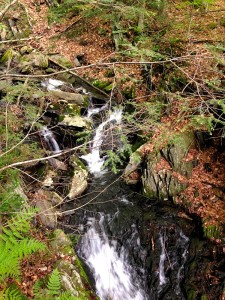
One of our first shocks when investigating land for our eventual homestead was the discovery that there are no open houses for rural properties! Not many people are looking for land like we are and even nice places can stay on the market for years and go months between inquiries.
Thus began our education into the vast array of differences between typical city properties and the rural ones we’re looking for now. Turns out there are all sorts of things country properties have (or don’t have!) that aren’t an issue in the city.
One of the things we absolutely take for granted in the city is our water supply. Being lifelong urban dwellers, we don’t give much thought to exactly where our water originates. We just pay our water bill and open the tap.
While I had a vague notion that rural properties have wells, I had no idea of the tremendous amount of information needed to assess the quality and longevity of various types of wells. Turns out, there are multiple things that folks in Vermont even call a “well”! Who knew? Well, we do now. And lucky for you, I’m sharing my newfound spring of knowledge today.
Types of Wells
Standard drilled well
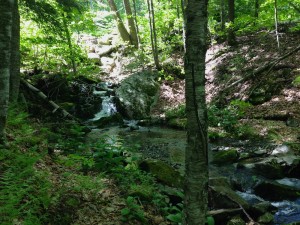
Common in newer construction, these wells are created by a truck with a giant drill on the back (think drilling for oil). The driller puts a metal casing in the well (to keep soil and other water out) until hitting bedrock, and then continues drilling through the rock until hitting water. A pump is inserted down into the hole and pumps water up a pipe inside the well casing. The water then enters the house and flows through a pressure tank.
What matters for a drilled well?
- Yield: This is expressed in gallons per minute (gpm). 30gpm is a normal household supply .
- Depth of well and depth of pump: It’s common to drill beyond the point where water is found. Say you hit water at 80 feet, you might continue drilling to 100 feet. You could then set the pump at 90 feet, and have 10 feet of water above the pump.
- Size of pressure tank: Tiny tanks mean the pump has to run more often which equals a shorter pump life.
- Location of well: The casing and well cap should protrude from the ground ideally in a spot that’s out of the way (and where Frugal Hound isn’t likely to trip over it).
- Water tests: Is the water potable? Have the owners ever needed to shock (add chlorine to) the well? Is it particularly hard/soft/stinky water such that it requires treatment or filtering?
We’ve seen several drilled wells that were dubious in nature. One was drilled 350 feet deep even though the depth to water was recorded as 230 feet. Why drill so much deeper? The well replenished very slowly, so they needed that extra column of water on top of the pump so that when they washed clothes and took a shower at the same time, for example, they wouldn’t run out of water.
Another had fine stats, but the well casing was located directly at the end of the driveway. Wouldn’t be such a problem except that was the perfect (and only) place to build a garage.
But all in all, a modern drilled well is the gold standard for rural water. In fact, when we began our property search it was the only water source I thought was common. Oh, I was so naive…
Hand Dug Well
Think hand dug wells are a relic of ye olde-timey pioneer days? So did I until we started running into them while looking at properties.
Dug wells operate on a somewhat similar basis to a drilled well–they’re a hole in the ground deep enough to hit water which you pump out for household use. But they’re significantly riskier than drilled wells since the water you’re procuring is much closer to the surface.
What matters for a dug well?
- How it’s capped: Thankfully, we haven’t come across a dug well that’s open to the air. However, capping methods vary dramatically. We’ve seen homebuilt wooden “well huts” that are clearly not animal proof. We’ve also seen tidy and secure concrete caps. If animals can get into your well, there could be all sorts of nasty things in your water.
-
Since we’ll be drinking this water, it’s important it’s contaminant free Depth of well and water level: I’ve encountered dug wells that were only ~15 feet deep with a couple feet of water on the bottom. I’ve also seen dug wells so deep it was difficult to ascertain the overall depth. Deeper is generally better, as shallow wells can run low during dry summer weather.
- What surrounds the well? Since much of the water from a dug well will be surface water filtered through the ground, it matters what’s in close proximity. Is there an animal barn uphill from the well? If so, be on the lookout for contaminants.
- What type of filtration system is in place? Most dug wells we’ve seen have some sort of filter on the water supply coming into the house. A few considerations in these instances are the cost of the filter, how often it needs to be replaced, and how fine a filter it is.
- Water test results: Dug wells are more likely to have the occasional poor test result (hence the filter). I’m not worried about some bacteria (the well can be shocked with chlorine), but I would be concerned if the results showed a chemical contaminant.
Spring Water
Doesn’t that sound idyllic? Spring water, just like what unfrugal people buy in bottles! What could be more natural than pure, clean water bubbling out of the ground?
Well, at least for the springs that we’ve seen while looking at properties, that perception is the exact opposite of the reality.
A “spring” is a place where underground water naturally flows or seeps to the surface. All of the springs we’ve seen were more “seep” than “flow” and in their natural form, would likely be charitably described as puddles.
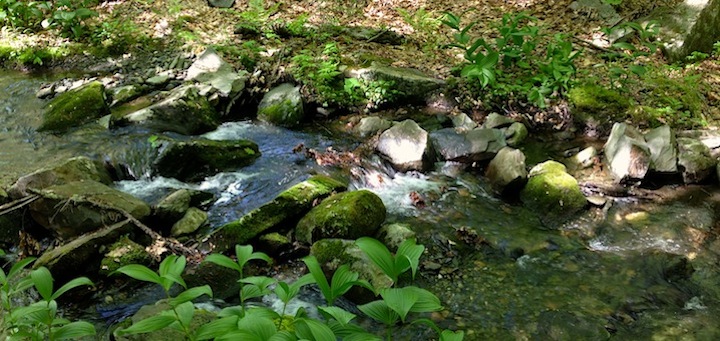
What do we look for in a spring?
- Containment: The two spring systems we’ve seen were dug out to increase the storage area for water. One had a wooden “spring box” built on top of it. It was nicely painted and looked quite quaint. But when I opened the door to look inside, I saw a dead bat floating in the water… ’nuff said. The other spring we encountered had a concrete spring box with a stout metal access panel. It was clean, I was happy!
- The surrounding area: It’s virtually certain that runoff will contaminate a spring from time to time. Therefore it’s vital that a spring isn’t positioned such that runoff from a pasture or other source of potential contamination has a clear path.
- Insulation: Since springs are sitting on the surface of the ground, they’re vulnerable to freezing in the winter. If they flow enough, it’s usually not a problem. In the “bat spring” mentioned above, the spring box was filled with moldy fiberglass insulation. I’m guessing freezing was a problem for them (and the bat too, apparently).
- Water tests: What’s in that spring, and what did the previous owners do to keep the water quality high? Every spring owner will swear that their water is “mountain pure”… but the proof is in the lab tests. Just because grandma drank that water for 90 years doesn’t mean it’s a good idea.
The Frugalwoods Water Preference

In case you couldn’t already tell, we’re heavily biased towards a modern drilled well. It’s not a deal breaker, but good water is just about as essential a must-have as you can get! If we found the perfect property, but it had a filthy spring… we could have a well drilled.
But well drilling is like playing the lottery. You pay by the foot, and you have no guarantee at what depth water will be found. Maybe you hit water at 60 feet… Maybe not until 400 feet. Your neighbor’s well depths can give you an idea, but it’s not a real prediction. That sort of experience we’re happy to leave to the previous owners!
And with that, I conclude Part 5 of the Frugal Homestead Series. Next up in the series we’ll continue exploring the structural differences between rural and urban properties since wells are but one example! Want to make sure you’re among the first to receive Part 6 delivered hot and fresh to your email machine? Sign-up in the Frugal Hound email box below and she’ll send you a message.


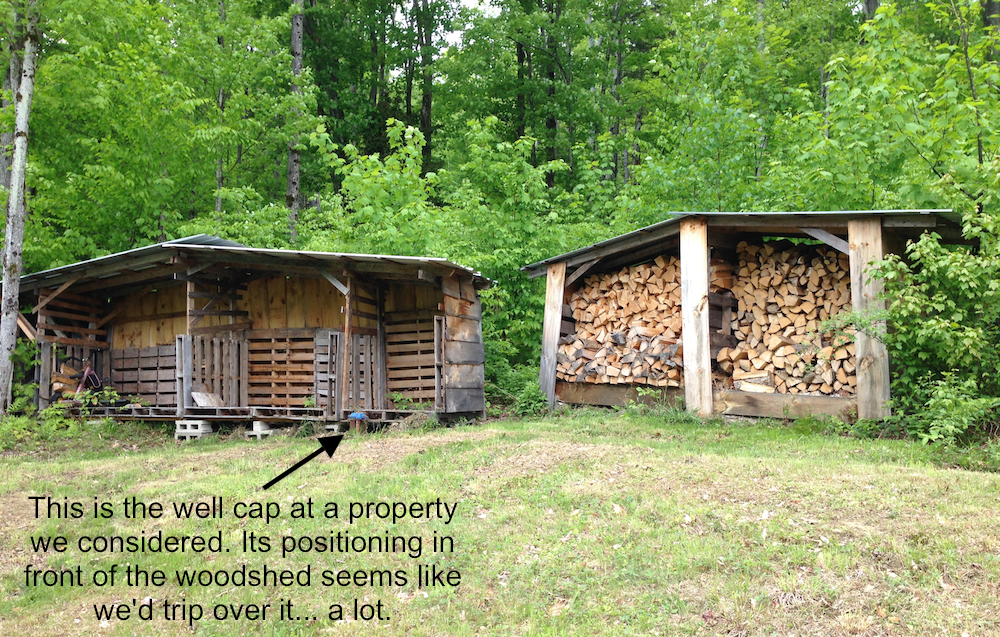
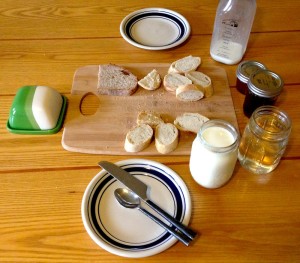
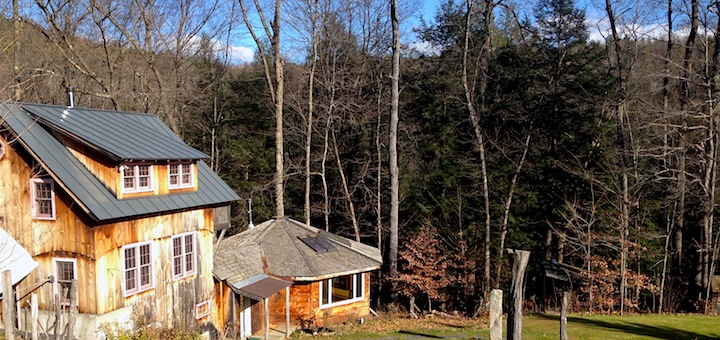
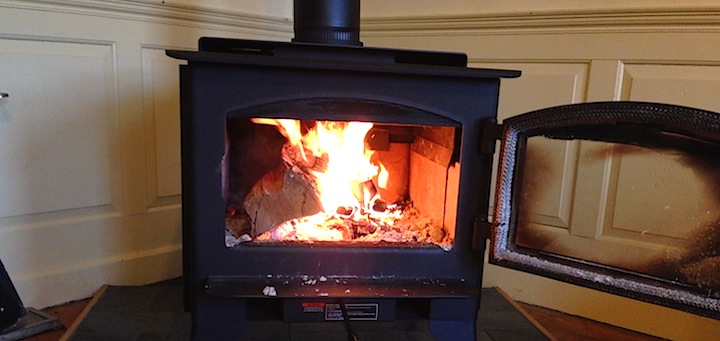
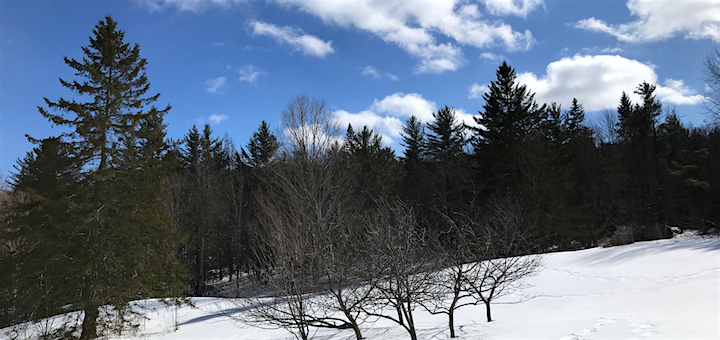
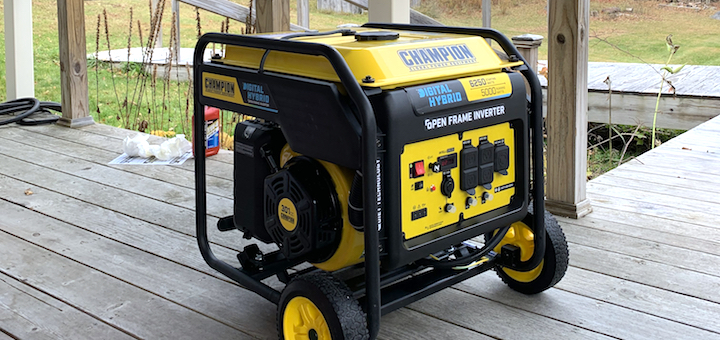
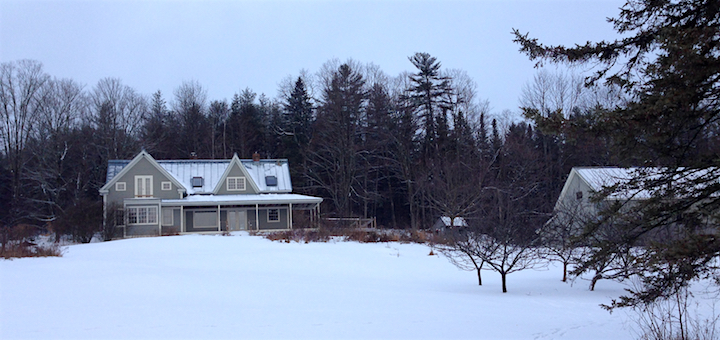
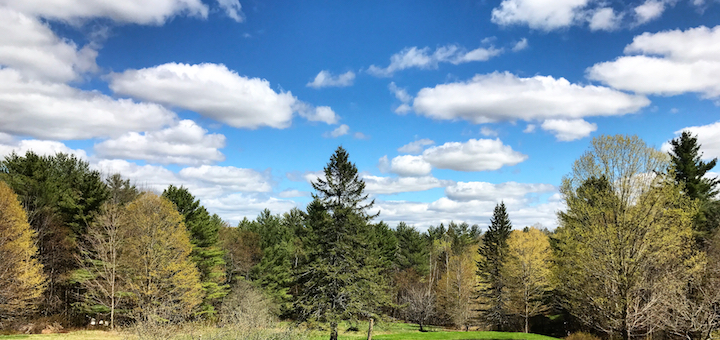
From what you’ve said here, it sounds like I would want a fairly modern drilled well too. I wouldn’t want to drink dead bat water. =)
Me either. And while we could have drilled a well or constructed a modern-ish spring box… there were other good reasons to pass on that property. No bat water for me!
After reading your post Frugalwoods, I just want to have my own well at home, despite the fact that it’s not possible because I live in a city. I envy you and your location. It seems like there are more things explore and challenges to face. Lots of opportunities!
City water is usually a bargain, be happy for what you have! But we’re excited nonetheless.
It’s really smart of you to look so heavily into the water situation. My sister and brother and law almost purchased a house with a contaminated/broken well. Thankfully, a friend of theirs also showed up at the auction, and recommended that they lower their top bid by 40K based off the water situation (which he knew about and they didn’t). Repairing wells can be extremely pricey, even more pricey than drilling a well in the first place I guess.
I’ve had to deal with 2 contaminated wells in properties I have bought. One time was easy, the other not.
The well in the house we live in right now tested positive for e.coli during preclosing inspection. Since we were buying the house as is in a foreclosure, curing that was up to us. The inspection company’s solution was installation of an $800 ultraviolet emanating gizmo that would kill the bacteria. My wife, who is a professional microbiologist, had a good snicker at that. She cured the e.coli issue with 8 or 10 gallon jugs of laundry bleach added to the well 2 gallons at a time at weekly intervals until the water tested negative for the e.coli.
The well in a rural property we bought in WV produced water that rusted surfaces and smelled bad. The operating theory was that this had been caused by oil/gas drilling in relative proximity to our 100-acre plot. And no recourse to the drilling company, either. The solution there was a water treatment system to remove the chemicals from the water that were causing the problem. It was never a complete solution, though. We never pursued it further because we sold the sucker.
The other thing that can happen, and almost happened to us on another property, is for the well to go dry. The water table drops and your well pump has nothing to pump. That time, I was glad we had a 400-foot deep well to give us a 100-foot water table buffer.
I know people who have used that bleach trick, though it’s best done under the supervision of a microbiologist 🙂
Chemicals in the well is a huge bummer. Bacteria I feel like is workable, but if a well has arsenic or benzene or some other nasty chemical… filtration to a safe ppm gets very expensive very quickly. I’d be happy to avoid it!
Thankfully in VT it’s pretty rare for a well to go dry, from my understanding. Plenty of rain, plenty of ground water. But I can imagine it can feel a lot like gambling to drill a new well out west! How deep to hit water, and then how much deeper to give you a margin for the future!
In this particular case there was “likely contamination” because natural gas companies had started drilling nearby, but there was no way to know because the water table had dropped and therefore they couldn’t pump any water.
So a double whammy. I think they are glad they didn’t buy.
Yeah, anytime you have to call the well guy it’s going to cost you big time. We’re hoping to find a place with a decent well already in place!
I am glad to see you are doing your homework. Homesteading is a wonderful ambition but country life IS very different and knowing what you may be getting into is vital.
We keep getting reminded at every turn just how different it is! But we find it kinda fascinating… so I guess we’ll be ok 🙂
I grew up in the country and moved to the city. I know a little about well water, but never had to worry about it since I was a child. I would recommend though that whatever house you purchase your first order of business should be water storage. You don’t want your pump to go out and not have any water. Good luck in your continued search.
Yeah, I’ve had a couple of people tell me stories about filling the bathtub before a snowstorm in case the power went out and the well pump no longer worked. Seems like we could have a slightly more involved plan than the bathtub, but the reality remains that without power a well is an expensive hole in the ground.
Variety of recommendations about amount of water to store, but it’s typically 2gal/person/day. Rotated monthly with no chemicals, with longer rotation you need to dose (carefully) with bleach to prevent algae.
I plan to store in 5 gal Coleman water jugs. Never had a water outage here longer than a few hours though, but like to be prepared anyways. Water is life!
Another option is a manual well-pump backup. I think there is a water table depth limitation, and they’re not cheap (about $5K) but it’s the most resilient option.
I think an easier solution would be to get a generator. Keep your well and other basic functions running. I’ve lived with well water all my life, never had a water storage system.
I grew up on a ranch with a well, and this was always a problem. The electricity goes out all of the time, so my dad always had water storage. He also had to manually start up the pump each time, which wasn’t fun. He eventually installed a water tank up the hill so in these situations we can still get *some* gravity-flow water down to the house. And we were never allowed to run the laundry and take showers or water the garden at the same time…everything was on cycles. But, yes, just another challenge to an already challenging lifestyle 🙂
Yep, I’ve talked to a couple of folks who have an uphill water tank that they mostly use for irrigation and animals, but can also switch to the household lines during power outages. Enough to fill toilets at least, which is 90% of the battle 🙂
Whoa with the dead bat. Mountain pure!
I grew up in the country with a well. We had sulfur water, so it smelled like rotten eggs. But I guess we were used to it bc we bathed in it and drank it and everything. There was no flouride in it, so my parents gave us flouride supplements.
In my memory, there was always something going wrong with the well. We also lost power often and since the well-pump was electric, that meant no water. So plan on having a backup generator or a manual pump backup!
I still have family living in the same area, and it seems like someone is always having a well issue. It’s never something small, like, “oh, we need this $50 part.” No, it’s like, “we have ecoli in the well so we need a $2000 light that will irradiate the water in there so we don’t die.”
But you all research everything so thoroughly that I am sure you will be well prepared and not blindsided by these things.
We had an e.coli issue too with the well in the house we live in right now. The well tested positive for e.coli during preclosing inspection. Like with you, the inspection company’s solution was installation of an expensive ultraviolet emanating gizmo that would kill the bacteria. My wife, who is a professional microbiologist, had a good snicker at that. She cured the e.coli issue with 8 or 10 gallon jugs of laundry bleach added to the well 2 gallons at a time at weekly intervals until the water tested negative for the e.coli.
Hahah. Way to hit me with the apocalyptic scenarios Taryn! It does make you reflect on how much easier city living can be. The most trouble our city water ever gave me was a stuck main valve… but that was an easy fix in the end. Different world on a well!
For backup, it seems that most people we’ve talked to store some potable water and use creek water for flushing toilets in the event of a power outage. Sounds OK to me as long as the creek isn’t too far from the house!
ahhh, yes, good old well water. This city girl learned more than she ever wanted to know about wells when she moved to Vermont. However, I can tell you when my then boyfriend visited me in the city and took a drink of water from the tap, he gagged, albeit politely, but it was a gag all the same. Our water from the tap from our well in Vermont tastes pure, clean, and sparkling. I think he said our well was 300 feet. He also said he “doused” for it. He, the country man, says it works, me….I think it’s screwy. But if you’re open-minded people, look into that and take it with a grain of salt! Drilling can be tenuous, as your neighbor hits at 100, and you have to go the 350, and pay more, like you said. And the flow rate can differ, so you want a good flow rate also, so you can bathe frugal hound and also wash his/her blanket in the washer at the same time. I so admire you two young people approaching your homesteading with level heads and knowledge and not only with dreamy hearts. It requires both. Good luck in finding your well.
Oh thanks Bev! As a man of science I too look a bit askance at the art of dousing… but then again there’s plenty in the world that we don’t completely understand yet works all the same. If a well driller wanted to douse for the spot, I’d happily let him go at it!
Frugal hound says she would be very happy if our future well situation didn’t allow for hound bathing, but I bet we’ll manage it somehow 🙂
Oh, yes, good point about the back-up generator! You will need that. Power is off, you have no water. We lived without it for years, but we bought it when it became affordable for us. I recommend putting that in the budget from the beginning. It just makes life a bit easier. Remember Hurricane Irene a few years back. It devastated Vermont. So check out some history on that storm.
Yes, it seems like everyone we meet in VT has their Irene story. Some folks in the area where we’re looking for property had a 20 minute commute turn into a 1.5 hour commute with bridges out. What a terrible mess.
My father-in-law was looking to move into a suburb that was relatively undeveloped and required wells in many of the properties. It’s amazing how people like me who only are looking into more densely populated urban and suburban areas do not even think about this aspect of home ownership. He passed on one huge piece of land where he could have built a brand new house because he did not want to deal with the risk that comes with a new well. He talked to a friend about it and it really can come down to luck. His friend ended up being UNlucky and they had to drill extremely far to reach water. It wasn’t cheap…let’s just say closer to $100k than to $0k….
Wooof. That’s some expensive water! I’d rather the previous property owner play that lottery and not me! 🙂
Exactly! That’s a big reason he went with a house that was already built. He’s in his 50s now and had some money set aside and was able to renovate it just the way he wants, so nothing was lost not being able to build a house from scratch.
Here’s the big question: will the frugal homestead take visitors? I’m thinking a B&B would be a great income generator ad a lot of fun. We stayed at a B&B near the Twin Cities for one of our anniversaries and the owners seemed like they were loving their lives.
Oh definitely! We talk about our AirBnB plans in the homestead budget post. Very much looking to put a cabin/yurt/treehouse or some other hipster-bait on the property. 🙂 Plus it would be great to have for family visits too!
I grew up in suburban (certainly not rural) Connecticut and we had a well. Not many problems, but I do remember one dry summer when the neighbor’s well went dry and they came over to our house to take showers. Someone else also made the very good point that you’ll want a generator to run the well pump when water goes out, or else fill the bathtub so you can flush the toilets. Once I moved to a city and had both public water and a gas stove, I didn’t mind power outages at all!
Right? With our gas stove and city water we could go without power for weeks in the summer and several days in the winter without serious problems. Makes me reflect on how much “easier” it is to live in the city from an infrastructure perspective.
I like Frugal Hound’s “cover” in today’s post. Did you make that? It looks nice for around the house when it is a bit chilly, but not chilly enough for a jacket.
Oh thanks! We actually didn’t make that one, it was a charity purchase from the greyhound rescue organization that originally fostered ‘ole Frugal Hound. A good cause, and a great coat!
I grew up in a fairly rural part of New England and we had a drilled well. For the 22 years I lived in the house, we only had one problem with it when I was about 15 years old when the well pump died. I believe my father went to Home Depot and purchased a new well pump. Then him, myself, and my grandfather pulled up the couple hundred feet of PVC pipe with the well pump attached to the bottom, replaced the pump, and set her back down. It took a few hours, but other than that in the 30 or so years the house has been built, there have been no other issues. Hopefully you don’t find any issues as well either!
Hey, a success story! Hopefully we’ll be that fortunate. Did your folks do any sort of regular maintenance to get such a long and trouble free life out of the system?
No maintenance what-so-ever. They also have hard water which most likely killed the pump sooner than its expected life. So if you find a drilled well with no hard water, and it was dug to an appropriate depth to avoid it drying out, I would expect it to be very little hassle.
Thanks! Good to hear that they can sometimes “just work”.
Sooo many considerations!! This is going to be such a big and exciting change and I like how you’ve broken it down. I think moving to a homestead might seem idyllic to many people, but it’s clear you two are doing some serious research before taking the leap.
Well, you know us. If it’s possible to over-research an idea we’ll absolutely do it! 🙂
One thing that you neglected to mention (and I hear about a lot from my sister in law) is freezing. Im not sure if her well is thawed out (yet) or not, but this is the second year in a row some aspect of her water delivery system has frozen in the winter. The first time it was the pipe from the well to the house, so they dug around it and put insulation around it then buried it again, and this year there was nothing they could really do about it, as far as I understand and had to live for at least a month (but probably 2 or more) with no running water. Just something (else) to consider.
Also, it’s funny that people hit water at a hand-diggable depth there. It’s 700+ ft to water where I live.
Oh man, that sounds rough. Most places in VT have the well pipe exiting the casing about 5 feet underground to prevent freezing. Seems to work just fine for drilled wells, though I’ve heard of freezing problems with dug wells and springs since their mechanicals are usually more exposed.
You must be out west! 700ft!
Mr. Frugalwoods,
Growing up we had a cistern at each of our homes. It wasn’t to expensive for us other then trucking costs to haul the water from the spring and off load in our cistern. We monitored our water usage and only needed it to be filled every couple months. I do know others paid for this service and it would run them over $180 a month. Not ideal. While working the camp I was staying at had the standard drilled well. Glad you mentioned the size of the pressure tank that is very important. The well worked great for I believe they said 15 years but it was very expensive to bring the service rig in and replace the pump and inspect the casing when it eventually stopped working. That would be my piece of advice to add if you choose to go the standard drilled method ask them if they have well-bore diagrams, process & instrumentation diagrams (P&ID’s) and any well servicing “pump replacement” history.
Great write up the standard well method is the route I prefer as well.
Robbie
Hey thanks! That’s a great tip to ask about documentation. I can imagine knowing what’s currently installed and what’s been done recently could save a lot of headache when trying to troubleshoot any future problems. I’m definitely adding this to my “ask the sellers” list. Thanks!
This entire post makes me very thankful for the running water the flows so freely through my home. 🙂 I honestly can’t imagine having to deal with a well situation and all that it entails, but you did promise on the podcast that the homestead would have running water so I can’t wait to see how you guys manage it.
Hah. Don’t worrry Shannon, we’re both firmly in the clean and non-batty running water camp. Just one more thing to figure out, which is fun!
I would want the drilled well too, seems like possible higher upfront cost, but better water supply over the long run. City slickers here with water bills as long as I can remember. My dad worked for our local water company for over 30 years.
I don’t mind our current city water bill, it seems like a bargain for reliable clean water 24/7/365. But I do like the idea of self reliance, even if that comes with more hassle and a less perfect uptime.
I have no experience with the subject, except for the water we pumped and filtered on the AT. It’s a pain. 🙂
I think you’re on the right track with the well, plus some filtration and/or testing system, already being on the property.
Backpacking pumps have come a long way recently! I have a sawyer squeeze mini, and it’s great. Faster and lighter than my old MSR pump, and less likely to break too.
But yeah, wouldn’t want to have to do that every day for the rest of my life!
I grew up with a well, and we now have one at our house, so I’m pretty used to it. We’ve had no problem with it, and our water supply is much more than ample. We have had some experience with water softeners and filtration systems, though. The previous homeowner had a pretty sophisticated filtration system, which we never touched. A couple of years ago, we had someone come in and look at it, and he told us the iron and other impurity levels in our well water was way too high, and we needed a new, $3,800 system. We ALMOST went for it, but at the last minute, decided to get a second opinion. Thank goodness, because the second guy said our water tested fine for consumption, but that a functioning softener would be important for maintaining the plumbing. We ended up purchasing a new water softener for $1,800. So definitely get multiple opinions/estimates, but ultimately as you said, water supply is something to take seriously.
I’ve been told by a couple of people that water filter salespeople are sorta like mechanics. Good ones exist… but you have to be careful to avoid the bad ones. Glad you managed to find one who could help for a reasonable price!
Here’s a book that might help you out somewhat:
COUNTRY & COTTAGE WATER SYSTEMS
by Max Burns
Thanks Mel! Just requested it from the library. It’s like Amazon for me, except it takes a couple of weeks and I have to go pick it up 😉
Water can be so tricky!! Another aspect of spring or river water that may or may not be relevant in Vermont is water withdrawal rights, licenses and restrictions. They can be extremely complicated and have entire sets of legislation surrounding them.
Definitely. Thankfully that’s not an issue in New England. We have plenty of water! About the only thing you aren’t allowed to do is dam a stream.
Wells and water is definitely a big thing to think about. Wes’ family’s property is run off a well and they’ve never had any problems with it. I would definitely want something clean to drink!
Glad to know someone in this thread had a good experience with a well!
When I was a senior in high school, my parents built a brand new house in the suburbs. That was my first experience with living in a house with a well. I’m sure it depends on where you live; Our water was incredibly hard, and had a high iron content. That meant dealing with a water softener (not setup to the cold water in the kitchen) and extreme lime buildup. And the iron stained everything orange. It was a constant battle to keep the toilet bowl and sinks looking clean. All of our white clothes were orange. My sister got special treatments on her blonde hair to counteract the orange hue. I remember being so thankful when I moved to a place with city water again!
On the flip side of the equation, my current house had a septic tank until about 2 years ago. I didn’t mind that at all. But then, I never had any issues. I was a little surprised though that my “city house” wasn’t on the sewer system. The things you learn!
Yeah, I’ve heard some horror stories from folks with high iron content wells. Thankfully that doesn’t seem to be common up here. What a mess though! And terrible for the pipes long term!
We have a well that provides hard water that stains everything turquoise. A few years ago, I decided to do the “no poo” shampoo method. I used baking soda solution, and rinsed with apple cider vinegar solution. I thought everything was going well, but my salt and pepper hair eventually turned green! The worst part was that it happened so gradually that I didn’t notice it. When I went for my annual haircut, the stylist asked “Did you intend to dye your hair green?”
Mr. F,
Very rarely have I read something I know so little about, damn! Seems I take running tap water too much for granted.
I can understand why you would want a modern well-drilled well and proper filtration equipment. Nothing is worth the risk of contaminated water.
Also, not to self: stay in the city!
Cheers,
NMW
Hah! NMW, you are welcome to stay in our future AirBnB yurt anytime! Guaranteed clean water included for free 🙂
Wow, living in New Mexico for 37 years has really given me perspective on water.
We get 8 to 12 inches of precip. in a typical year.
Originally our 11 acre lot was “unimproved” – just as God made it.
We had a dowser find the most likely spots for the well.
He walked over every square foot of the land with a brazing rod he held like a fishing pole which had an aspirin container
taped to the tip of it, and another brazing rod through his belt loops, parallel to his hips.
Finally he said “you should probably drill here, scratching the dry, stony earth with the steel toe of an old Redwing boot.
That’ll be $50 please. And it’s down about 160 feet”.
His name was Sandy Cole, and he had a good reputation in our area, so why not?
At the time it was about $20/foot, cased, for drilling.
The casing is PVC rather than steel – no rust issues.
We hit the water at about 160 feet (!), and drilled to about 210, set the pump at 205.
A few years later our new neighbors, about 300 yards away, drilled three dry holes.
Realizing it’s all a gift of Karma, we felt it necessary to share our well with them when they asked.
So it’s been 35+ years and we all – from 4 to 8 of us at various times – have kept clean and hydrated from the
2.5 gallons/minute well.
Over the last 25 years, collectively we use less than 100 gallons/day.
The learning curve was pretty steep, and it was hard to cut back on the garden & landscaping, but hey – life in the desert.
I’ve since gotten a 500 gallon water tank on a trailer and haul from a county facility about 12 miles away. This is just for
the trees, landscaping & basil – but what luxury!
But really, Mr. F, you can build over or around just about anything.
I wouldn’t let fear of tripping over a well cap influence the choice of a property – be creative – HA!
Cheers
Now that’s a story that had me wanting more! You ever thought about a writing career? I felt like I was right there with Sandy (what a name for a dowser!).
Yeah, I hear you on being creative. If we came across a property that ticked all the boxes except it had a nasty spring… we’d just make do. Either drill a real well or dig out the spring and put in a proper box.
But I do like knowing how things “should” be done. Kinda like how I watch This Old House. I want to know how to do it “right” before I go about kludging it together from what I have on hand 🙂
I grew up on well water (in VT), and my grandmother (our neighbor) had a spring. I always thought our water tasted MUCH better 🙂 Now, I’m in a more populous area of the state and on city water (not the same!) So much to think about!
Right at the moment I peered into that springbox and saw the floating bat… city water was sounding really good! But we’re pretty resourceful, I think we could make just about any situation work in the end. Just a question of how much money and effort it would take.
This is your friendly neighborhood Hydrologist checking in!
I’ve been involved in water science for years, and definitely agree with your desire for a modern well. Any sort of spring water, or really any surface water in general has just about a million different things that go wrong and contaminate it. Underneath the ground, ole mother earth is keeping your water clean and cool with natural filtration and storage. Of course do some water testing, but it sounds like you’ve got all that figured out.
Congrats and looking forward to your next Homestead post.
Max
Can I just say how much I love the internet. I mean really. In the last post I had a woman comment who works in permitting septic systems, and now a hydrologist. Ya’ll are amazing!
Thanks Max, glad my research has pointed me in a sane direction so far!
I have been living with well water for most of my life. For the last 20 years I have been in one place with a well that has never had any problems. 10 years ago Poland Spring started pumping water from the same aquifer so now I get Poland Spring Water from my taps. There is a spring about 400 feet from my house that runs year round. Three of my neighbors get their water from that spring and have it tested once a year. In power outages I carry water from there so I don’t need to store water. Good water is important. I have friends who have to buy drinking water because their well water contains arsenic and others with radon gas. Other wells near me have high amounts of iron. It’s safe to drink but you can taste it and it turns white clothes into khaki when you wash them.
Hey, if it’s good enough to be bottled then it would be good enough for me! 🙂
Oh, the well. We live in a house with a 9-foot well and three dirty children. I am scared to drill, because everyone here hits arsenic deep down and that is another problem. You mentioned well depth and amount of water in the well. 1- I would recommend looking at properties in the last week of August, when the water level will be at its lowest. 2- It doesn’t matter if there are only two feet of water in a dug well- it’s the recharge rate that matters. If there is a spring or other source near the well, it may recharge constantly and quickly. 3- look out for road salt getting into your well. How close is it to the road, is it downhill, and how is the road treated? 4- definitely fill the bathtub in a storm. It’s low tech and easy.
5- locate your washer/dryer/bathtub/main bathroom all on the main floor and close to the clothesline and well. If you have a problem it is so much simpler. And if you have really dirty stuff, throw it in the tub and the washer is right beside it. 6- A dug well is a fabulous way to get in touch with nature. The ebbs and flows of precipitation, temperature, frozen ground water- you’ll never believe other folks when they say “What a rainy summer” and your well is dry- you will know Mother Nature intimately and the difference between a drizzle and real rain. Good luck!
Really great points on making sure the surrounding area is clear of potential pollutants! We did see one place with the dug well probably 30 feet downhill from the road. Gotta imagine the salt runoff in the springtime is a danger.
I read that you are thinking of renting your present home when you finally start your Vermont adventure. I’ve been a landlord for many years now (I own an investment condo) and have learned a few lessons that I like to share.
1) No matter how carefully you screen your tenants there are no guarantees how they will behave. The lady I’m renting too presently for the last few years has been a blessing compared to her predecessor. When our last tenant moved out our lovely immaculate condo had smashed walls, filthy carpets, kicked in doors. Furthermore I was treated to an earful of threats and obscenities when I refused to return the damage deposit.
2) What has helped is that our condo is ten minutes down the road. So those evening calls about a broken this or that could be quickly dispatched. An Absentee landlord would have to have a prearrangement with the tenant or local handyman.
3) I no longer have a mortgage on the condo so an open month or an late rent check isn’t the end of the world. Tenants sometimes refuse or simply can’t pay and it isn’t as if you can toss them out on their ears. It can take months and months and be very unpleasant indeed.
4) who will handle renting the home and dealing with the tenants? Managing agents and brokers are expensive and not always trustworthy.
You’ve done your research on your 30 acres of heaven I suggest you do the same about your plan to rent your home.
Yeah, all very good points. Being a landlord is certainly a risk. We’ll do our best within the law to screen tenants, and the price point of a cambridge single family house certainly help to filter people. Not toooo many deadbeats can afford/qualify for a $4k/month house.
We’ll also definitely have a local handyman who can help with problems that are immediate.
That being said, I’m sure it will be a learning experience!
My parents have well water, but I had no idea what that entailed. Now I’m curious to learn the details of their well, because they drilled the well when they built the house. Next time I go home, I’m going to find that well cap and hopefully not trip over it!
Hah! It’s a whole world of underground unknowns! Must be working OK if they’ve never told you a tale of woe.
We’ve been toying with the idea of moving to the country and building our own house, and only recently realized that is not going to happen in California unless we win the lottery. Not only is the land incredibly expensive ($200,000+ for 1.75 acres with no house, improvements, or hook ups), but once you factor in drilling a well it becomes outrageous. $100k+ for a well plus a septic system.
It’s always interesting to hear about other states and how they do things. I had no idea people used spring water for their property still! I doubt that’s common out here as we are all about the drought all the time. Maybe in the more mountainous regions.
Yeah, we briefly considered CA (Mrs. FW has family out there) but the price of land and the uncertain water situation made it clearly untenable. It’s too bad, it’s a gorgeous state!
While I’m all citified and don’t have a clue about this kind of stuff, my mom grew up on a rural piece of property in Ohio and had a well. They did well with it (ha!).
I’m glad someone is getting on the pun train!
I guess you learn something new every day…and today I learned about well types. Awesome.
With cost of water constantly being pushed up (15% this year), especially in our drought-ridden state, I would welcome a well.
Yeah, I imagine ya’ll have a whole different set of environmental worries out there. It’s one of the reasons we decided to stay in the northeast… easy access to fresh water. I know people trying to find homestead properties out west who pass over tons of places because of water concerns.
I had no idea there were various types of wells, I definitely learned something new today! 🙂 I’m fascinated by your future homestead, I would love to live in a more country landscape someday and this series makes it fun to dream about!
Thanks! It’s been fun to start actually putting a dream into action!
I learned a lot of new information from the post, didn’t know there were so many different types of wells (at least how to cap and how to drill them). I also didn’t realize that anyone even used a spring these days. One of my friends growing up had well water, and the only thing I really remember about it was that it tasted so much better than the tap water at my house! I don’t recall them having any trouble with it either.
Glad it was informative! As we keep learning new things I’m sure there will be future posts on completely random rural knowledge 🙂
Oh man this post brought back memories. When I was a kid our power went out constantly and not only did we fill the tub with water (that was the clean water) but I would set up buckets all around the covered porch and the water that gushed through the leaks into my buckets provided enough graywater to last a week. I don’t remember ever testing it, and we definitely didn’t have an automated system to help. Don’t know how true it is, but I’ve heard you become immune to the bacteria in the water you grew up with.
Hopefully you are looking at the septic arrangement too, it doesn’t quite make as fun of a topic to blog about but is an important part of evaluating the water situation.
Municipalities can also require mandatory tie-ins/tap-ins–I can’t remember what the technical name is–where though towns are rural now, there’s either a provision or a stipulation or something in state law that if a public water system is set up within x miles of the town, private septic/water is effectively outlawed and homeowners are required to hook up *and* to cover the cost of extending the infrastructure from the existing system however many miles it is to their property. Positioning on a future public water supply may or may not be something you want to do but you should see what the situation is. In NY it is decided on a village or county basis (but we have county-based government, which complicates things) but in Connecticut it was state law. My parents inherited a lien for the house’s hookup to mandatory septic, though they kept the well.
With Vermont having so much granite running through the water table, you probably also want to ask about radon testing. Here in NY results of any radon testing are required disclosure materials for house-hunting but if it isn’t in VT you should ask, because the chances of it being a problem are greater there than here.
There’s another set of issues that come along with buying property on former agricultural land, esp. re: common surface and subsurface contaminants, but since I could go on and on and on about rural houses I’ll stop blathering now and wait for part 6 … but good on you for paying attention to this stuff, it will save you lots of time and trouble in the long run.
Hey Thanks!
Don’t worry, the “other side” of the water system is coming up in a future post. 🙂
Radon is certainly something that’s on my radar (ha!) since we’re also air-sealing zealots for energy efficiency. A lot of these older farmhouses are so drafty that radon isn’t a problem… but if you tighten them up then the effective exposure can go over the allowable limits. I honestly didn’t know it could be a problem with well water, but now I have something else to research! Thanks!
This was interesting. My family moved to the CT suburbs when I was 11 and I remember my parents paying to have the well extended from 250 to 500 feet. Maybe to get take water away from the neighbors and “drink their milkshake?” I don’t know. Still seems weird to me to have a well in a 50s ranch neighborhood.
I can only hope that you’ll discuss waste solutions in the future. I was shocked when I learned that a “cesspool” is an actual thing.
Yeah, that is odd. But with that sort of depth, assuming the original 250 footer has water in it… you probably could have filled a swimming pool with that well!
Spoiler alert: the “other side” of the water equation is coming up. Riveting stuff. And terribly expensive to do right, as I’m learning!
This has reminded me of how much I need to stay in the suburbs! Thank you for dosing reality here 🙂
Hi there….new to your blog. Found the link from JLCollinsnh.com.
At any point, did you consider using a rainwater catch/cistern system? I’m in NW Vermont and thinking of buying rural land in the future. Since Vermont gets decent rainfall, was curious if this was realistic.
That’s a good idea to continue drilling after you hit the water. I could see how that would give you access to more water in the long run. I should make sure that I do that if I get a well drilled up at my cabin.